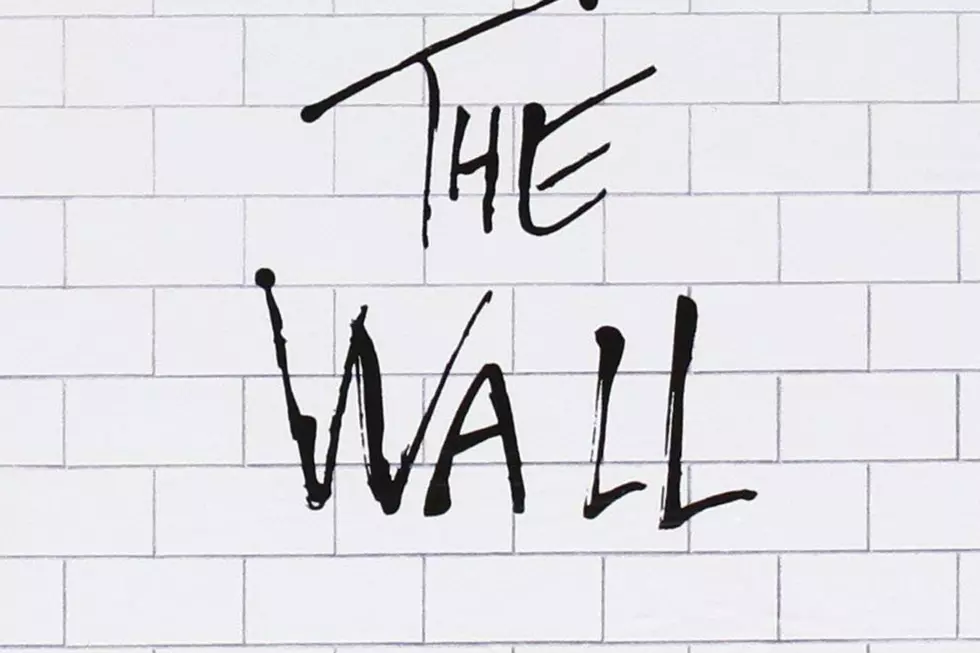
How Pink Floyd’s ‘The Wall’ Continues to Resonate
On Nov. 30, 1979, the rock landscape was forever altered with the release of The Wall, an art-rock magnum opus created as Pink Floyd slowly imploded under in-fighting, financial disputes and personality clashes.
From the moment the band initially went into Floyd’s legendary Britannia Row Studios in Islington, London, to begin laying tracks for the record, some members were barely speaking. Keyboardist Rick Wright was saddled with a failing marriage and was battling with Roger Waters. Waters and David Gilmour were clashing over creative differences as the seeds of their looming split began to sprout.
Waters brought in super-producer Bob Ezrin, who had worked with Kiss, Alice Cooper and Lou Reed, among others, which further divided the fracturing band. The tension led Wright to refuse to record with his bandmates. By the end of the yearlong recording process, Waters was living in Switzerland, drummer Nick Mason was in France and Gilmour and Wright lived in the Greek islands.
“I think the problem is Roger doesn’t really respect David,” Mason said in 2018. “He feels that writing is everything, and that guitar playing and the singing are something that, I won’t say anyone can do, but that everything should be judged on the writing rather than the playing.”
Gilmour himself has admitted that the album represented “the last embers of mine and Roger’s ability to work collaboratively together.”
Whatever the reasons, during The Wall sessions, rarely did the band venture into the studio together. The massive undertaking, the scope of which expanded daily as Waters’ grandiose vision took shape, ultimately took band members, Ezrin and a stable of studio musicians, producers and contributors to studios in France, Los Angeles and New York.
Composer/conductor Michael Kamen, who had worked with David Bowie, was brought in to layer in recordings by the New York Symphony Orchestra, the New York Philharmonic and the New York City Opera on “Nobody Home,” “Comfortably Numb” and “The Trial.”
Waters was the mad scientist at the controls, with Ezrin, while a revolving cast of guest singers and musicians joined, including pop singer Toni Tennille, of Captain and Tennille (backing vocals on "The Show Must Go On" and "Waiting for the Worms"); Beach Boys singer Bruce Johnston; Toto drummer Jeff Porcaro (“Mother” and “Bring the Boys Back Home”) and jazz guitarist Lee Ritenour (“One of My Turns,” “Comfortably Numb”).
The Wall topped the U.S. album chart for 15 weeks, and went on to sell more than 24 million copies worldwide, making it Floyd’s second biggest smash, after 1973’s monstrous The Dark Side of the Moon. It clocked in at more than 78 minutes, included 26 tracks and introduced the world to a level of theatrical rock bombast never before imagined.
From the guttural opening notes of “In the Flesh,” the record is as cinematic as rock gets. There are helicopters, bullhorn-propelled interludes, groupies marveling at the band’s hotel room, babies crying, war planes dropping bombs, birds chirping, explosions and a school headmaster’s scathing rants.
Musically, there is Waters’ thumping bass and cathartic caterwauls, Gilmour’s incomparable tones and meandering, impassioned leads, Wright’s gorgeously twisted synth lines and Mason’s thundering, and at times militant, backbeats. It all provides the soundtrack for Waters’ dark operatic journey through his post-World War II psychosis.
We meet Waters’ Pink: a tortured rock star whose dad was killed in the war. It’s an event that becomes an albatross around his neck and plunges him into an existential downward spiral. Never before had a shrink’s couch sounded so darkly perfect.
You have the Broadway-on-acid nightmare of “The Trial.” Gerald Scarfe’s twisted album artwork included a crude drawing of a judge, an image burned in the minds of a generation that serves as a vivid reminder that a picture indeed is worth a thousand words. Scarfe’s animation in the subsequent 1982 film expanded on the trippy imagery and elevated rock films to levels that have been chased by other artists ever since.
While Dark Side of the Moon was actually a bigger record, it was The Wall that truly revealed the limitless possibilities of rock. With the movie, it captivated a generation and inspired millions to seek out deeper, darker and more intelligent music. It had a feeling of raw danger, disturbing psychoanalysis, passion and a cutting political edge that resonates as loudly today as it did upon its release.
There’s a reason The Wall became an anthem when the Berlin Wall came down. There’s a reason Waters, in 2017, posed the idea of performing the record at the U.S.-Mexico border to protest President Donald Trump's anti-immigration, “build the wall” policy. The record’s themes of isolation, government oppression and corporate greed are as relevant today as ever.
Its impact at the time was astounding as it forever altered the scope of what a rock record could be and proved that a theatrical approach to stadium rock could work on a giant scale, even if the band that made it could not. Its influence can still be heard today in acts like Mastodon, Coheed & Cambria, System of a Down and Ghost. Without Floyd smashing down those barriers of rock conformity, the experimental music landscape likely would have never reached the levels that it has.
Despite its success, the seeds for the band’s eventual dissolution were sowed during The Wall sessions, as Waters and Gilmour each dug in and ultimately walked away from one another.
"Dave and I are not mates, we never were and I doubt we ever will be. Which is fine, there's no reason why we should be,” Waters coldly told the U.K.’s Telegraph in 2017. “You can be creative without being friends. David and I did a lot of great work together, which wouldn't exist without both of us being there."
Thankfully for rock fans, they held it together long enough to give us this. And that’s an anniversary worth celebrating.
Pink Floyd Albums Ranked
More From Ultimate Classic Rock









